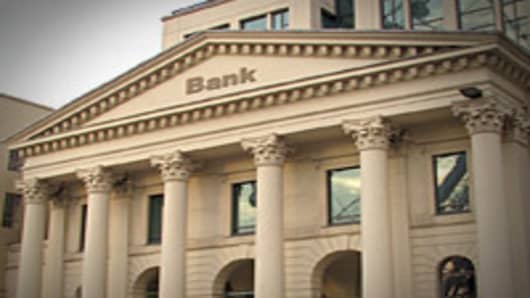U.S. accounting standard-setters bowed to congressional and banking industry pressure Thursday and allowed more flexibility in valuing toxic assets that have forced billions of dollars in writedowns.
The five-member Financial Accounting Standards Board voted unanimously to let banks exercise more judgment in mark-to-market accounting, to determine whether a transaction is distressed and a market is inactive.
But in a move that would help many U.S. banks report stronger results, the board split 3-2 in approving guidance that would let lenders take smaller losses on impaired assets available for sale.
"I think this is an improvement," FASB Chairman Robert Herz said of the changes during FASB's three-hour meeting in a drab boardroom that was filled with dozens of representatives of accounting firms, banks and insurance companies.
But board members Marc Siegel and Thomas Linsmeier cast dissenting votes on the new guidance for how companies write-down assets that have dropped significantly in value.
The changes would take effect in the second quarter for most U.S. financial firms, but early adoption could be allowed for first quarter results.
Many lawmakers, banks and other supporters of the changes argue that pricing assets to firesale prices during a time of inactive markets has exacerbated the financial crisis through the writedowns, big earnings hits, damage to capital ratios, and a reduced ability to lend.
Investors take a different view, saying that more flexibility with the rules would let big banks hide the real value of their toxic assets.
Dark Days For Some
Robert Willens, an analyst who specializes in tax and accounting issues, said the changes will help banks cosmetically and increase their capital levels.
"Yet I'm finding the investors I speak to are mostly disappointed because it doesn't change the reality of the banks," he said. "This may end up being a dark day in history before it's all said and done. It's a pyrrhic victory."
A Congressional panel last month told Herz to move quickly to ease the mark-to-market guidance or lawmakers would take action.
Four days later FASB issued two proposals: one to give banks more flexibility in applying mark-to-market accounting and another addressing when banks must take writedowns on impaired assets.
The Financial Services Roundtable, which represents the largest financial firms welcomed FASB's actions.
"The guidance will remove artificially downward pressure on asset value and actually help restore the economy," said Scott Talbott, the roundtable's chief of government affairs.
The accounting board considered hundreds of letters and e-mails sent by banks, investors and others commenting on the FASB proposals.
Herz also said FASB "did extensive outreach to investors, particularly major investors in financial institutions" ahead of Thursday's meeting.
But FASB members Siegel and Linsmeier were unhappy with the easier standard on writing down assets.
"I'm afraid that this change will result in fewer impairments being recognized, and I don't think that will help the investor confidence in the balance sheet," said Siegel at the meeting.
FASB splits on writedowns
Linsmeier and Siegel sparred over whether to call the change "ridiculous" or "ludicrous," and Linsmeier said the board was making changes to address regulatory capital concerns.
"I find one of the most unfortunate parts of this to be the fact that we're continuing to take the responsibility on rather than having the regulators to take this on," said Linsmeier, a FASB member for three years and former chairman of Michigan State University's accounting department.
Siegel joined the board in October. He had led an accounting research and analysis team at RiskMetrics Group that focused on investor-oriented issues.
In considering the proposals on Thursday, FASB said the objective of mark-to-market, or fair value accounting, in inactive markets should be to determine what an asset could fetch in an "orderly" transaction between market participants.
Such an "orderly" transaction would not include distressed transactions or fire-sales, it said.


